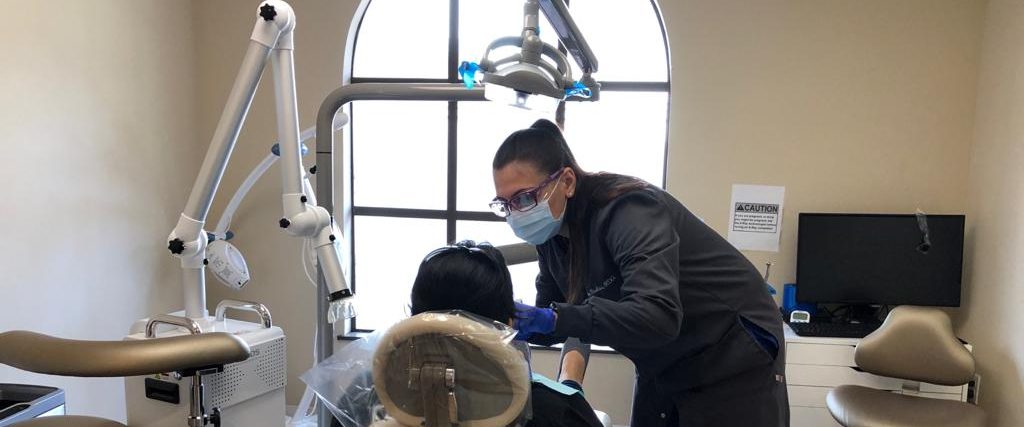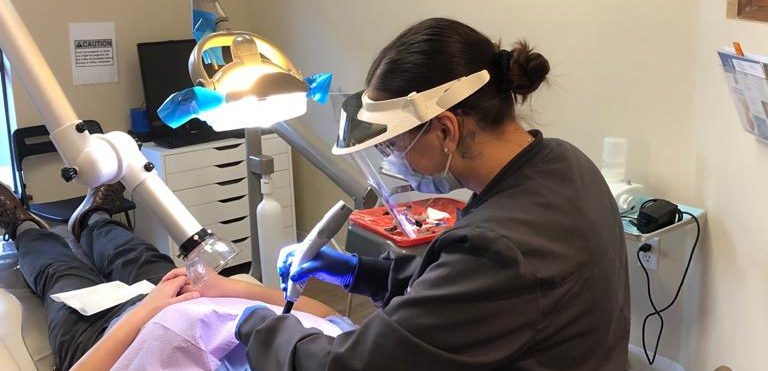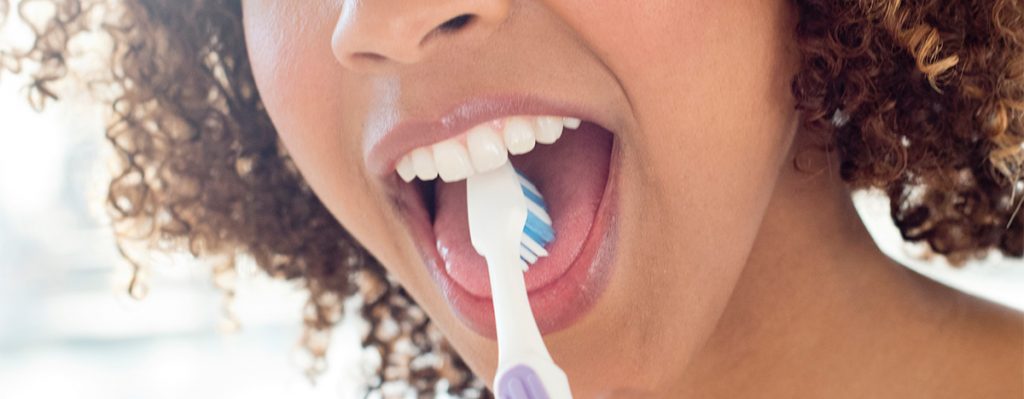Date : 25/07/2020
Many people think of braces as a cosmetic procedure only, with the primary purpose of achieving straight teeth and improving your smile. While crooked teeth may be one of the signs you need braces, most people are not aware that there are a surprising number of issues that braces can correct and improve.
But the truth is, if you’re an adult, you may be hesitant to consider braces.
Orthodontists often hear the question, “Won’t I look ridiculous?” But, there is no need to worry. Around 30 percent of adults are orthodontic patients today.
Although it’s best to begin treatments earlier in life, it’s not always possible. Some parents may not be able to afford braces, and so you may be seeking this treatment out on your own as an adult. Or, you may not have experienced any orthodontic issues or pain until recently.
Whatever the reason you are asking about braces, you can benefit from them at any age. However, the first thing you need to understand is the signs you need braces, so you can decide what type is right for you.
Before We Cover The Signs You Need Braces…
Let’s cover a little bit about what braces are, who installs them, and what you should consider when evaluating the signs you need braces.
If you are considering having braces installed, you will need to seek out an evaluation from an orthodontist. That is a dental specialist who works in diagnosing and preventing the misalignment of jaws and teeth.
In many cases, your primary dentist will notice that you may benefit from orthodontia, and he or she will refer you to an orthodontist. If you have ever wondered about the signs you need braces, then chances are you might.
There are several things to consider that factor in to your decision:
Treatment
Although there are slight variations in the length of treatment required for each type of braces, it’s quite individual based on your specific dental condition.
The average length is typically between one and three years. During that time you will be required to have your braces adjusted once every six weeks.
Hygiene
When you have braces installed, it’s more important than ever to be vigilant with your dental hygiene.
Investing in a high-quality electric toothbrush can be beneficial, and you should make sure to brush at least twice a day.
Here’s the truth:
It’s inevitable that food will get stuck on your teeth due to the brackets and wires. So, to keep that to a minimum, it’s probably ideal to brush after each meal or snack.
Flossing is a different story.
It can be tricky with braces, so it is advised to use waxed floss with a floss threader. Also, small dental spoolie brushes are great for removing food lodged in your braces.
And you should also purchase a fluoride mouthwash to strengthen the enamel of your teeth and protect the health of your gums.
Foods to avoid
Your orthodontist will likely advise you not to consume sticky foods like gum or taffy, as they can get stuck in your braces and put at risk for dental decay.
Not only that:
You also may find you have difficulty eating things like corn on the cob and chewy foods like licorice or bagels. Eating, in general, may take some getting used to when you have braces installed.
Aftercare
When your treatment is complete, you’ll need to wear a retainer in order to prevent your teeth from shifting back into their original positions. You could wear retainers for several years or indefinitely. There is more to it, and you may want to know what you can expect from your teeth after the braces are removed.
Here’s what happens:
Your orthodontist takes a mold of your teeth and creates a custom retainer for you made of acrylic or wire, depending on the type of retainer you are advised to use.
Some people will have a fixed retainer or a wire that bonds to the inside of the teeth. Others have a removable retainer.
Price
The cost of braces can vary somewhat, depending upon which type of braces you desire and your individual dental needs. Typically, braces cost between $3,000 and $10,000.
The 4 Signs You Need Braces
As mentioned previously, braces can correct a wide array of dental conditions.
For instance:
If you’re unhappy with a crooked smile, experiencing functional issues such as difficulty eating, drinking, speaking, suffering from headaches, or having tooth or jaw pain, then you may be a candidate for braces.
You might wonder if you should get braces, but are unsure. Don’t worry, we’ve put together four signs you need braces below to help you decide:
Crooked Teeth
Having crooked teeth is one of the most common reasons that people desire to have braces installed.
Crooked teeth can be the result of genetics or from childhood thumb sucking. When crooked teeth are straightened with braces, it can also improve the look of the jaw, lips, and face. Some others may seek out braces to correct misshapen teeth or large gaps.
Anteroposterior deviations
Anteroposterior deviations are more commonly referred to as underbites or overbites.
Having an anteroposterior deviation is the issue that is most likely to lead to problems with functionality, such as speaking, eating, or drinking.
And braces are the best way to correct it.
Overcrowding
Overcrowding refers to the problem of having too many teeth for the size of your mouth.
When overcrowding occurs, the new adult teeth that come in can shift the existing teeth out of alignment.
Misalignment of the Jaw
Misalignment of the jaw can lead to health problems such as headaches, earaches, neck pain, and poor quality sleep.
Temporomandibular Joint Dysfunction, or TMJ, is a troubling and painful condition associated with misalignment. Many people who have TMJ also have issues with clenching or grinding their teeth, which can be quite painful.
The bad news is:
Grinding can wear down your teeth over time. And it increases your risk for expensive dental work, such as crowns.
So, although your teeth may be straight, you could still have jaw misalignment that may required correction with braces. A qualified orthodontist can evaluate you and confirm this as a sign you need braces.
Types of Braces
Although there are different types of braces used depending upon your individual preference and the recommendation of your orthodontist, they all work the same.
And that is by applying continual pressure over time.
Braces work by slowly moving your teeth in the proper direction. Your jaw bone will also change shape as pressure is applied to the teeth.
If you think you have signs you need braces, we’ve outlined the different types of braces below:
Metal or “traditional” braces
Metal, or “traditional” braces, are made up of metal brackets and wires, and they’re probably the ones you think of when you think of braces.
Your orthodontist will apply the metal brackets to the teeth with glue and thread metal wires through the brackets.
Rubber bands are then placed around the brackets, and you can have fun with customizing the color. This type of braces is the fastest way to get the results you want while also being the least expensive option.
The thing is:
Metal braces are more noticeable than some other braces we will discuss below, but they are far less noticeable than they used to be.
In fact, the metal braces of today are smaller, and the wires that move the teeth do so more quickly than before and with less discomfort. With metal braces, you’re required to have them adjusted roughly every six weeks.
The length of time wearing them vary between one and three years. The average cost of metal braces is $3,000 to $7,000.
Ceramic braces
Ceramic braces have the same bracket and wire components as metal braces, but the brackets are made of ceramic and are the same color and texture as your teeth.
So, they’re basically invisible.
They are not often used, however, because the ceramic can stain quickly if you don’t adhere to a strict cleaning schedule.
Ceramic braces are also more expensive than metal braces and can average between $4,000 and $8,000. And like metal braces, they need to be adjusted about every six weeks.
Depending on your individual treatment plan, you will wear the ceramics from one to three years.
Lingual braces
Lingual braces are the same as metal braces, the only difference being that they are placed on the inside of the teeth rather than the outside.
These are actually invisible!
Their benefits are that they are just as effective as traditional braces and can usually only be seen when the mouth is open.
But here’s the bad news:
Their placement makes it very difficult to keep them clean, and it can be difficult to speak with them on.
Orthodontists also don’t recommend them for more severe orthodontic problems that require lengthier treatments.
The overall treatment with lingual braces takes longer than average and is more expensive than traditional braces. They braces cost approximately $8,000 to $10,000.
Self-ligating braces
Self-ligating braces are also composed of brackets and wires instead of rubber bands. There are small, spring-loaded clips on each bracket to hold the wires in place.
With self-ligating braces, your routine adjustment appointments are much quicker, as opening and closing the clips is faster than replacing all the elastics.
Not only that:
Your overall length of treatment may be reduced somewhat with self-ligating rather than traditional braces. Another added benefit is that you will experience less friction without rubber bands, making the wearing experience more pleasant.
The average cost of self-ligating braces is $3,800 to $8,000.
Like the aforementioned types of braces, your routine adjustment will be approximately every six weeks, with the overall treatment length being between one and three years.
Invisalign
Invisalign is a type of braces that utilizes custom-made clear plastic aligners rather than the bracket and wires system.
Besides being nearly invisible, the most obvious benefit with Invisalign is the ability to completely remove the aligners during meals and for cleaning.
They’re also more comfortable than other types of braces.
Invisalign works well for standard alignment issues but is not recommended for severe orthodontic issues. It may also be ineffective at moving molars.
The clear aligners will need to be switched approximately every two weeks to accommodate the new positions of the teeth and keep them moving in the desired direction.
The total treatment time can vary from 6 to 18 months or longer. The price is usually between $3,500 and $8,000.
Paying for Braces
There’s no doubt that braces are expensive, and if you think you have one of the signs you need braces, your next thought will probably be the cost. But if you have signs you need braces, what are you going to do? And most importantly:
How are you going to afford this orthodontia?
Well, there are a variety of options you can consider depending upon your unique financial situation.
Dental insurance
While most dental insurance plans will cover a portion of the orthodontic costs for children, it can be difficult to find a plan that will cover braces for adults.
However, there are some that will, especially if the reason you’re seeking out braces is to correct a functional problem rather than purely for cosmetic reasons.
Payment plans
Many orthodontist offices offer in-house payment plans that are interest-free and allow you to spread the total orthodontia cost over time.
If you decide to go with a payment plan to pay for your braces, it’s likely you will be required to make a down payment the day your braces are installed.
Dental schools
If you live near to a dental school, you may be able to get your braces for a fraction of the cost.
Your orthodontia care will be provided by a resident. But there is no need to worry, because they will be supervised by a qualified, experienced orthodontist.
Pay up front
Paying up front can be a prohibitive payment method for some people, but it is still an option worth considering.
Most orthodontists will offer a sizable discount on the total cost if you are able to pay up front. You can choose to pay with cash, a check, or a credit card.
Need Braces? Get the Smile You Want
If you have the signs you need braces, then you might be unhappy with your smile or are experiencing other problems.
And that just doesn’t have to be your future.
Braces are a great option for correcting your orthodontic issues. While they do require a time commitment and some changes in your daily habits, the benefits you will receive from braces far outweigh any of the minor inconveniences involved.
All you have to do is talk to your your orthodontist, who will help you decide on the kind of braces that will fit your needs. The only thing left to do is get them installed and let the braces work their magic!
Don’t waste another day being unhappy or in pain. And get that smile you know you’d love to have. Your Caring Dentist Group can help you get that smile you deserve. So, request an appointment today to discuss your options.
Which type of braces are you considering? What signs you need braces category do you fall into? Tell us all about it in the comments!




